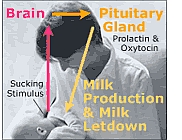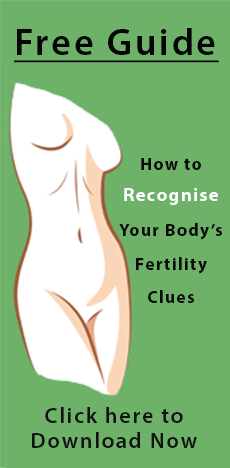Breastfeeding is primarily controlled by the hormones Prolactin and Oxytocin.
Prolactin stimulates milk production and Oxytocin controls the milk ejection reflex or let down from the mammary glands. Oxytocin also stimulates the uterus to return to a pre-pregnant state and reduces blood loss after birth.
Prolactin levels increase during pregnancy but milk is not produced in the mammary glands because pregnancy levels of oestrogen and progestone inhibit the prolactin from being effective.
After childbirth oestrogen and progesterone levels drop, allowing Prolactin to become effective – ie, start stimulating milk production.
 Prolactin levels also decrease after childbirth but every time the baby nurses or breast feeds, a signal travels from the nipples to the hypothalamus in the brain which triggers the pituitary gland to release more prolactin. At each breastfeed, there is a 10 fold increase in the levels of prolactin which lasts for about an hour after the feed. This is why its important to feed frequently.
Prolactin levels also decrease after childbirth but every time the baby nurses or breast feeds, a signal travels from the nipples to the hypothalamus in the brain which triggers the pituitary gland to release more prolactin. At each breastfeed, there is a 10 fold increase in the levels of prolactin which lasts for about an hour after the feed. This is why its important to feed frequently.
If the prolactin surge is blocked by injury, disease or if nursing is discontinued the breasts will lose their ability to make breastmilk after a few days.

 Prolactin levels also decrease after childbirth but every time the baby nurses or breast feeds, a signal travels from the nipples to the hypothalamus in the brain which triggers the pituitary gland to release more prolactin. At each breastfeed, there is a 10 fold increase in the levels of prolactin which lasts for about an hour after the feed. This is why its important to feed frequently.
Prolactin levels also decrease after childbirth but every time the baby nurses or breast feeds, a signal travels from the nipples to the hypothalamus in the brain which triggers the pituitary gland to release more prolactin. At each breastfeed, there is a 10 fold increase in the levels of prolactin which lasts for about an hour after the feed. This is why its important to feed frequently.